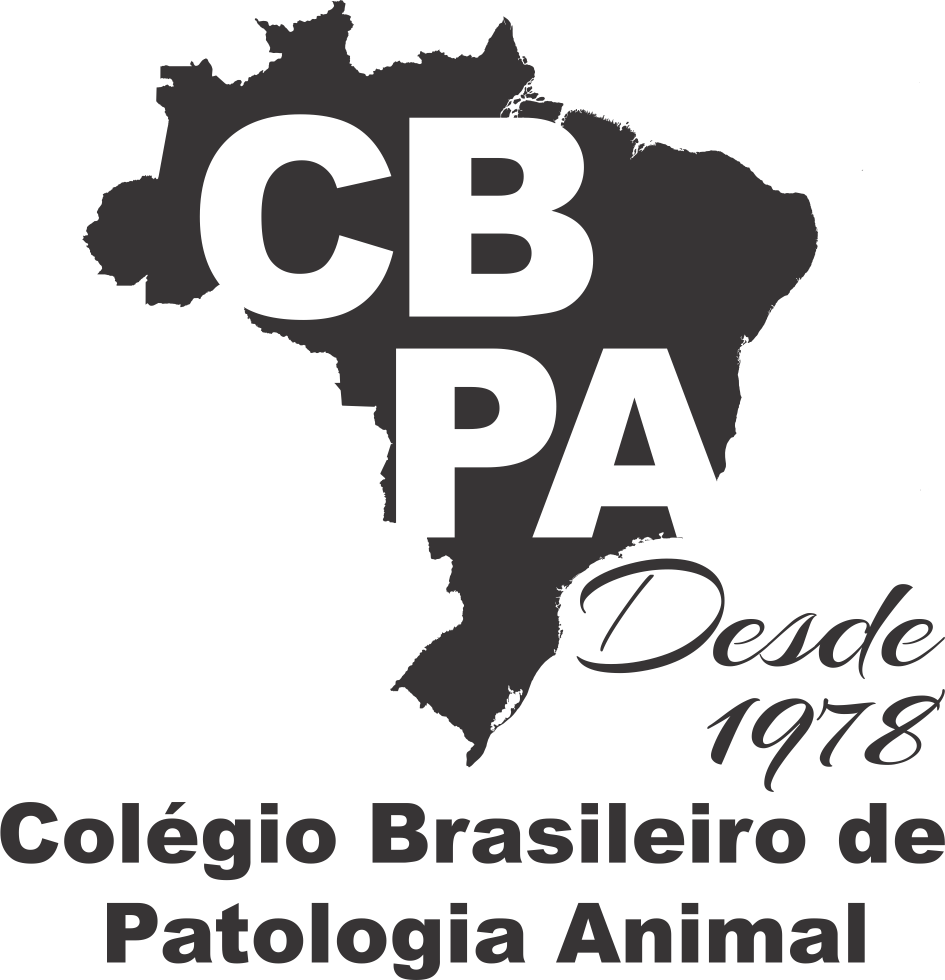Resultado da pesquisa (5)
Termo utilizado na pesquisa Pneumonia enzoótica
#1 - Genetic diversity of Mycoplasma hyopneumoniae in finishing pigs in Minas Gerais
Abstract in English:
Mycoplasma hyopneumoniae is one of the most challenging respiratory pathogens involved with swine pneumonia worldwide, responsible for a chronic infection with high morbidity, which predisposes secondary bacterial infections in growing and finishing pigs. Advances in diagnostic techniques allowed identification of genetic characteristics associated with high antigenic and proteomic variability among bacterial strains. This study aimed to evaluate the genetic diversity of M. hyopneumoniae strains in lungs with pneumonic lesions obtained from 52 pig farms located in Minas Gerais, one of the largest swine production states in Brazil. Genotyping was performed using multilocus variable number of tandem repeat (VNTR) analysis (MLVA), targeting two loci encoding P97 and P146 adhesins VNTR. The results showed that this agent is widely disseminated in pig farms and there is a high polymorphism of M. hyopneumoniae variants circulating in the state of Minas Gerais. Different M. hyopneumoniae genotypes are randomly distributed in several regions of the state, with no specific geographic population structure pattern. M. hyopneumoniae association with viral agents was sporadic (3.17% with Influenza A and 1.9% with PCV2).
Abstract in Portuguese:
Mycoplasma hyopneumoniae é um dos patógenos respiratórios mais desafiadores envolvidos com pneumonia suína em todo o mundo. É responsável por uma infecção crônica de alta morbidade, que predispõe a infecções bacterianas secundárias nas fases de crescimento e terminação. Avanços nas técnicas diagnósticas permitiram a identificação de características genéticas do agente, associadas à alta variabilidade antigênica e proteômica entre cepas. Este estudo teve como objetivo examinar a ocorrência e diversidade genética de cepas de M. hyopneumoniae em pulmões com lesões pneumônicas em 52 granjas de suínos no estado de Minas Gerais, um dos maiores estados produtores de suínos do Brasil. A genotipagem foi realizada utilizando a técnica de “multilocus variable number of tandem repeat analysis” (VTNR/MLVA), usando dois loci que codificam VNTR das adesinas P97 e P146. Os resultados mostraram que esse agente está amplamente disseminado em granjas de suínos e que existe alto polimorfismo das variantes de M. hyopneumoniae circulando no estado de Minas Gerais. Diferentes genótipos de M. hyopneumoniae estão distribuídos aleatoriamente em várias regiões do estado, sem um padrão de estrutura populacional e geográfica específico. Associação de M. hyopneumoniae e agentes virais foi esporádica (3,17% com Influenza A e 1,9% com PCV2).
#2 - Real-time PCR quantification and histopathological findings of Mycoplasma hyopneumoniae infection in the lungs of pigs slaughtered in São Luís, Maranhão, Brazil
Abstract in English:
Porcine enzootic pneumonia (PES), mainly caused by the bacteria Mycoplasma hyopneumoniae, is the main cause of respiratory problems in pigs. Infection by M. hyopneumoniae leads to production losses and the predisposition of affected animals to secondary infections, which may result in the condemnation of carcasses and organs due to lung lesions at the time of slaughter. The objective of the research was to evaluate the infection by M. hyopneumoniae in pigs submitted to slaughter in São Luís Island/MA, using molecular and histopathological diagnostic methods. One hundred fifty lung samples were collected from inspected (n=65) and non-inspected (n=85) slaughter pigs on São Luís Island, Maranhão, from July 2019 to August 2021. Of the 150 DNA samples collected, 121 showed an amplified product for Cyt B in the PCR assay. Thus, 121 samples were submitted to qPCR of M. hyopneumoniae, of which 44 (36.36%) showed positive results. The mean amount of bacterial load ranged from 1.20 × 101 to 7.20 × 104, with a mean of 1.73 × 104 copies. Of the reagent samples, 81.81% (36 samples) were obtained from non-inspected slaughter, while 18.18% (8 samples) were obtained from slaughterhouses. In the histopathological analysis, 44 positive qPCR samples were evaluated, of which 28 (63.63%) presented results compatible with the main inflammatory process associated with the presence of M. hyopneumoniae, that is, bronchial-associated lymphoid tissue hyperplasia (BALT). Three samples that showed the highest bacterial load (qPCR: 5.63 × 10³, 2.19 × 104 and 7.23 × 104) showed more evident lesions in this study. The microscopic findings associated with the quantifications indicated a relationship between the amount of bacterial load and the presence of microscopic lesions; higher bacterial load in lung tissue is associated with increased histopathologic staining for BALT hyperplasia. In conclusion, the results point to the circulation of the etiological agent in the sampled animals and the need for preventive measures on pig farms in Maranhão with the involvement of producers, sanitary defense and inspection agencies.
Abstract in Portuguese:
A pneumonia enzoótica suína (PES), causada principalmente pela bactéria Mycoplasma hyopneumoniae, é a principal causa de problemas respiratórios em suínos. A infecção por M. hyopneumoniae leva a perdas produtivas e a predisposição dos animais acometidos a infecções secundárias, o que pode resultar em condenação de carcaças e órgãos por lesões pulmonares no momento do abate. O objetivo da pesquisa foi avaliar a infecção por M. hyopneumoniae em suínos submetidos ao abate na Ilha de São Luís, por meio de métodos diagnósticos moleculares e histopatológicos. Para isso, foram coletadas 150 amostras de pulmão de suínos de abate inspecionado (n=65) e não inspecionado (n=85) na Ilha de São Luís/Maranhão, no período de julho de 2019 a agosto de 2021. Das 150 amostras de DNA coletadas, 121 apresentaram produto amplificado para Cyt B no ensaio de PCR. Assim, 121 amostras foram submetidas à qPCR de M. hyopneumoniae, das quais 44 (36,36%) apresentaram resultados positivos. A quantidade média de carga bacteriana variou de 1,20 × 101 a 7,20 × 104, com média de 1,73 × 104 cópias. Das amostras reagentes, 81,81% (36 amostras) foram obtidas de abate não inspecionado, enquanto 18,18% (8 amostras) foram obtidas em abatedouro. Na análise histopatológica, foram avaliadas 44 amostras positivas para qPCR, das quais 28 (63,63%) apresentaram resultados compatíveis com o principal processo inflamatório associado à presença de M. hyopneumoniae, ou seja, hiperplasia do tecido linfóide associado ao brônquio (BALT). Três amostras que apresentaram maior carga bacteriana (qPCR: 5,63 × 10³, 2,19 × 104 e 7,23 × 104) foram mais evidentes neste estudo. Os achados microscópicos associados às quantificações indicaram uma relação entre a quantidade de carga bacteriana e a presença de lesão microscópica; a maior carga bacteriana no tecido pulmonar está associada a maior alteração histopatológica para hiperplasia BALT. Em conclusão, os resultados obtidos sinalizam para a circulação do agente etiológico nos animais amostrados e a necessidade de medidas preventivas nas criações de suínos do estado do Maranhão com envolvimento dos produtores, órgãos de defesa sanitária e inspeção.
#3 - Respiratory diseases in calves in southern Rio Grande do Sul: study of 33 outbreaks, 33(6):745-751
Abstract in English:
ABSTRACT.- Assis-Brasil N.D., Hinnah F.L., Fiss L., Sallis E.S.V., Grecco F.B., Ladeira S.R.L., Marcolongo-Pereira C. & Schild A.L. 2013. [Respiratory diseases in calves in southern Rio Grande do Sul: study of 33 outbreaks.] Doenças respiratórias em bezerros na região sul do Rio Grande do Sul: estudo de 33 surtos. Pesquisa Veterinária Brasileira 33(6):745-751. Laboratório Regional de Diagnóstico, Faculdade de Veterinária, Universidade Federal de Pelotas, Campus Universitário s/n, Pelotas, RS 96010-900, Brazil. E-mail: alschild@terra.com.br
Thirty-three outbreaks involving pneumonia in young cattle diagnosed in the area of influence of the Regional Diagnostic Laboratory (LRD) of the Veterinary School of the Federal University of Pelotas (UFPel) between 2000 and 2011 were studied. Eighteen outbreaks (54.54%) were diagnosed in dairy breeds and Jersey or Holstein and 13 outbreaks (39.39%) in beef cattle or crossbred beef cattle. Morbidity ranged from 0.06% -100% and mortality was 0.06% to 34.61%. The disease occurred in all seasons of year and was more frequent in calves aged 1-3 months (11 outbreaks). Seven outbreaks occurred in cattle between 4-6 months, seven between 6-12 months and six outbreaks occurred in calves 1-30 days. Bovine respiratory disease due to infection with bovine respiratory syncytial virus (BRSV) was more frequent in beef cattle breeds with eight outbreaks (44.44%); six outbreaks of this disease occurred in calves of dairy breeds (33.33%). The diagnosis was confirmed by immunohistochemistry in seven cases. The main clinical signs were characterized by dyspnea, weight loss, lethargy, tremors, bruxism, dehydration, rapid and noisy breathing, coughing, serous or mucopurulent nasal discharge, recumbency and death. Gross lesions were characterized by dark red areas of consolidation, edema and emphysema in cranio-ventral regions of the apical and cardiac lung lobes or diffuse interstitial pneumonia, edema and emphysema. Histologically, lung lesions were variable. Diffuse bronchopneumonia necrotizing with marked hyperplasia of type II pneumocytes and alveolar and interstitial edema was observed in 15 cases. The results of this study demonstrate that pneumonia is an important cause of economic loss in young cattle in the area of influence of the LRD and that enzootic pneumonia due to BRSV infection is important in both beef cattle and milk cattle regardless of husbandry systems.
Abstract in Portuguese:
RESUMO.- Assis-Brasil N.D., Hinnah F.L., Fiss L., Sallis E.S.V., Grecco F.B., Ladeira S.R.L., Marcolongo-Pereira C. & Schild A.L. 2013. [Respiratory diseases in calves in southern Rio Grande do Sul: study of 33 outbreaks.] Doenças respiratórias em bezerros na região sul do Rio Grande do Sul: estudo de 33 surtos. Pesquisa Veterinária Brasileira 33(6):745-751. Laboratório Regional de Diagnóstico, Faculdade de Veterinária, Universidade Federal de Pelotas, Campus Universitário s/n, Pelotas, RS 96010-900, Brazil. E-mail: alschild@terra.com.br
Foram estudados 33 surtos de pneumonia em bovinos jovens na área de influência do Laboratório Regional de Diagnóstico (LRD) da Faculdade de Veterinária da Universidade Federal de Pelotas (UFPel) entre os anos de 2000 e 2011. Foram diagnosticados 18 surtos de pneumonia (54,54%) em bovinos de raças leiteiras, Holandês ou Jersey e 13 surtos (39,39%) em gado de corte ou cruzas de gado de corte. A morbidade variou entre 0,06%-100% e a mortalidade foi de 0,06%-34,6%. A doença ocorreu igualmente em todas as estações do ano e foi mais frequente em bezerros de 1-3 meses totalizando 13 surtos. Sete surtos ocorreram em bovinos entre 4-6 meses, sete entre 7-12 meses e seis surtos ocorreram em bezerros de 1-29 dias. Pneumonia enzoótica pela infecção pelo vírus sincicial respiratório bovino (BRSV) com lesões histológicas de broncopneumonia, pneumonia intersticial e presença de células sinciciais foi mais frequente em bovinos de raças de corte com dez surtos (58,8%); seis surtos dessa enfermidade ocorreram em raças de leite (35,2%). O diagnóstico foi confirmado por imuno-histoquímica em sete casos. Os sinais clínicos da maioria dos casos de pneumonia observados caracterizaram-se por dispneia, emagrecimento, apatia, tremores, bruxismo, desidratação, respiração ruidosa, tosse, corrimento nasal seroso ou mucopurulento, decúbito e morte. As lesões macroscópicas caracterizaram-se por presença de áreas de consolidação vermelho-escuras, edema e enfisema nas regiões crânio-ventrais dos lobos pulmonares cardíaco e apical ou pneumonia intersticial com distribuição difusa, edema e enfisema. Histologicamente, as lesões pulmonares eram variáveis. Broncopneumonia necrossupurativa difusa acentuada com hiperplasia de pneumócitos tipo II e edema intersticial e alveolar foi observada em 15 casos. Os resultados deste trabalho demonstram que as pneumonias são importantes causas de perdas econômicas em bovinos jovens na região de influência do LRD. Deve ser destacado que a pneumonia enzoótica devido a infecção pelo BRSV é importante tanto em bovinos de corte como de leite independente da forma de criação.
#4 - Pneumonia enzoótica em javalis (Sus scrofa), p.461-468
Abstract in English:
ABSTRACT.- Ecco R., Lazzari M.A. & Guedes R.M.C. 2009. [Enzootic pneumonia in wild boars (Sus scrofa).] Pneumonia enzoótica em javalis (Sus scrofa). Pesquisa Veterinária Brasileira 29(6):461-468. Departamento de Clinica e Cirurgia Veterinárias, Escola de Veterinária, Universidade Federal de Minas Gerais, Av. Antônio Carlos 6627, Cx. Postal 567, Belo Horizonte, MG 31270-901, Brazil. E-mail: ecco@vet.ufmg.br
The aim of this paper is to describe the clinical, epidemiological, pathological, bacteriological and immunohistochemical aspects of a pneumonia outbreak in a wild pig farm in the Distrito Federal, Brazil. Ninety wild pigs died in a period of five months, and 63 of these had pulmonary lesions. Clinically, the pigs presented reduced growth rate, anorexia, lethargy, cough and dyspnea, especially after they were moved. High body temperature (40oC in average) was verified in some animals. Auscultation revealed moderate pulmonary crepitation and stertors. Pulmonary gross lesions were typical of lobular bronchopneumonia. Lung lesions were characterized by ventral-cranial consolidation in the majority of the cases. The color of affected pulmonary areas varied from diffuse dark red to mosaic pattern (dark red lobule intercalate by grayish lobule) or diffusely grayish. The majority of the lungs had mucopurulent exsudate in the bronchial lumen that also drained from the parenchyma cut surface. Upon microscopy, the changes were characterized by purulent and histiocytic bronchopneumonia with necrotic foci. In some animals, there was BALT hyperplasia associated with perivascular and peribronchial plasma cells and lymphocytes infiltration in most of these cases. Bordetella bronchiseptica and Streptococcus spp. were the most frequently isolated bacteria. Immunohistochemistry evaluation demonstrated Mycoplasma hyopneumoniae on the luminal surface of bronchial and bronchiolar epithelial cells, and the DNA of bacteria was detected by PCR. This is the first report of bronchopneumonia in wild boars associated with M. hyopneumoniae infection.
Abstract in Portuguese:
ABSTRACT.- Ecco R., Lazzari M.A. & Guedes R.M.C. 2009. [Enzootic pneumonia in wild boars (Sus scrofa).] Pneumonia enzoótica em javalis (Sus scrofa). Pesquisa Veterinária Brasileira 29(6):461-468. Departamento de Clinica e Cirurgia Veterinárias, Escola de Veterinária, Universidade Federal de Minas Gerais, Av. Antônio Carlos 6627, Cx. Postal 567, Belo Horizonte, MG 31270-901, Brazil. E-mail: ecco@vet.ufmg.br
The aim of this paper is to describe the clinical, epidemiological, pathological, bacteriological and immunohistochemical aspects of a pneumonia outbreak in a wild pig farm in the Distrito Federal, Brazil. Ninety wild pigs died in a period of five months, and 63 of these had pulmonary lesions. Clinically, the pigs presented reduced growth rate, anorexia, lethargy, cough and dyspnea, especially after they were moved. High body temperature (40oC in average) was verified in some animals. Auscultation revealed moderate pulmonary crepitation and stertors. Pulmonary gross lesions were typical of lobular bronchopneumonia. Lung lesions were characterized by ventral-cranial consolidation in the majority of the cases. The color of affected pulmonary areas varied from diffuse dark red to mosaic pattern (dark red lobule intercalate by grayish lobule) or diffusely grayish. The majority of the lungs had mucopurulent exsudate in the bronchial lumen that also drained from the parenchyma cut surface. Upon microscopy, the changes were characterized by purulent and histiocytic bronchopneumonia with necrotic foci. In some animals, there was BALT hyperplasia associated with perivascular and peribronchial plasma cells and lymphocytes infiltration in most of these cases. Bordetella bronchiseptica and Streptococcus spp. were the most frequently isolated bacteria. Immunohistochemistry evaluation demonstrated Mycoplasma hyopneumoniae on the luminal surface of bronchial and bronchiolar epithelial cells, and the DNA of bacteria was detected by PCR. This is the first report of bronchopneumonia in wild boars associated with M. hyopneumoniae infection.
#5 - Ultrastructural observation of the airways of recovered and susceptible pigs after inoculation with Mycoplasma hyopneumoniae, 18(1):1-7
Abstract in English:
ABSTRACT.- Irigoyen L.F., Van Alstine W, Turek j. & Clark L.K. 1998. Ultrastructural observation of the airways of recovered and susceptible pigs after inoculation with Mycoplasma hyopneumoniae. [Observação ultra-estrutural das vias aéreas de suínos recuperados e suscetíveis após inoculação com Mycoplasma hyopneumoniae.] Pesquisa Veterinária Brasileira 18(1):1-7. Depto Patologia, Universidade Federal de Santa Maria, Campus Camobi, Santa Maria, RS 97119-900, Brazil.
To determine the morphological differences in the epithelium of the airways of recovered and susceptible pigs after Mycoplasma hyopneumoniae challenge, twenty-four 4-week-old M. hyopneumoniae-free pigs were intratracheally inoculated with 107ccu/ml of a pure low-passaged culture of the P5722-3 strain of M. hyopneumoniae challenge material. Eight pigs (group I) were challenged at the beginning of the experiment and rechallenged 3 months late 1: Group II pigs were also challenged at the beginning of the experiment and necropsied 3 months later: Group III pigs were challenged at the sarne time as the rechallenge of group I pigs. Eight nonchallenged pigs served as contrais (group IV). Three days after the second challenge of group I and the first challenge of group III, and every 3 and 4 days thereafter, two pigs from each group were euthanatized by electrocution and necropsied. Samples of bronchi and lung tissue were examined using light and electron microscopy (SEM and TEM). Macroscopic lesions were observed in the lungs of all group III pigs (average = 4.74%) and were characterized by purple-red areas of discoloration and increased firmness affecting the cranioventral aspect of the lungs. Macroscopic lesions of pneumonia in groups I and II were minimal (less than 1%). There were no gross lesions of pneumonia in contrai (group IV) pigs. Microscopic lesions were characterized by hyperplasia of the peribronchial lymphoid tissue and mild neutrophilic infiltrates in alveoli. Electron microscopy showed patchy areas with loss of cilia and presence of leukocytes and mycoplasmas in bronchi of susceptible pigs (group III). The bronchial epithelium of rechallenged (group I), recovered (group II), and control (group IV) pigs was ultrastructurally similar indicating recovery of the former two groups. Although mycoplasmas were seen among cilia, a second challenge on pigs of group I did not produce another episode of the disease nor did it enhance morphological changes, suggesting that those pigs could become carriers of M. hyopneumoniae.
Abstract in Portuguese:
RESUMO.- Irigoyen L.F., Van Alstine W, Turek j. & Clark L.K. 1998. Ultrastructural observation of the airways of recovered and susceptible pigs after inoculation with Mycoplasma hyopneumoniae. [Observação ultra-estrutural das vias aéreas de suínos recuperados e suscetíveis após inoculação com Mycoplasma hyopneumoniae.] Pesquisa Veterinária Brasileira 18(1):1-7. Depto Patologia, Universidade Federal de Santa Maria, Campus Camobi, Santa Maria, RS 97119-900, Brazil.
Para determinar as diferenças morfológicas no epitélio das vias aéreas de suínos suscetíveis e recuperados da infecção por Mycoplasma hyopneumoniae, 24 leitões com 4 semanas de idade, livres de infecção por M. hyopneumoniae, foram inoculados intratraquealmente com material contendo 107ccu/ml de cultura pura da cepa P5722- 3 de M. hyopneumoniae. Oito leitões (grupo I) foram inoculados no início do experimento e reinoculados 3 meses mais tarde, após apresentarem a doença e terem se recuperado. Os oito leitões do grupo II foram também inoculados no início do experimento e necropsiados 3 meses depois. Os leitões do grupo III foram inoculados ao mesmo tempo da reinoculação dos leitões do grupo I. Oito leitões não inoculados serviram como controles (grupo IV). Três dias após a reinoculação dos leitões do grupo I e a inoculação do grupo III e, a partir disso, a cada 2 dias, dois leitões de cada grupo foram sacrificados e necropsiados. Segmentos de brônquios e pulmão foram examinados em microscopia ótica e microscopia eletrônica de transmissão e de varredura. Lesões macroscópicas foram observadas nos pulmões de todos os leitões do grupo III (média: 4.74% da superfície) e eram caracterizadas por áreas firmes e avermelhadas nas porções cranioventrais. Lesões macroscópicas semelhantes foram mínimas em pulmões de leitões dos grupos I e II (menos de 1%) e ausentes.no grupo IV. As lesões microscópicas consistiam de hiperplasia do tecido linfóide peribronquial e infiltrado neutrofilico leve nos alvéolos. Na microscopia eletrônica havia lesões focais no epitélio ciliado, caracterizadas por perda de cílios e descamação de células, e presença de leucócitos e micoplasmas nos brônquios de leitões suscetíveis (grupo III). O epitélio bronquial de leitões reinoculados (grupo I), recuperados (grupo II) e controles (grupo IV) era ultraestruturalmente similar, indicando recuperação nos primeiros dois grupos. Embora micoplasmas tenham sido observados entre cilios, uma segunda inoculação em leitões do grupo I não causou outro episódio da doença nem aumentou as alterações morfológicas nos brônquios, sugerindo que esses leitões podem se tornar portadores de micoplasmas.











